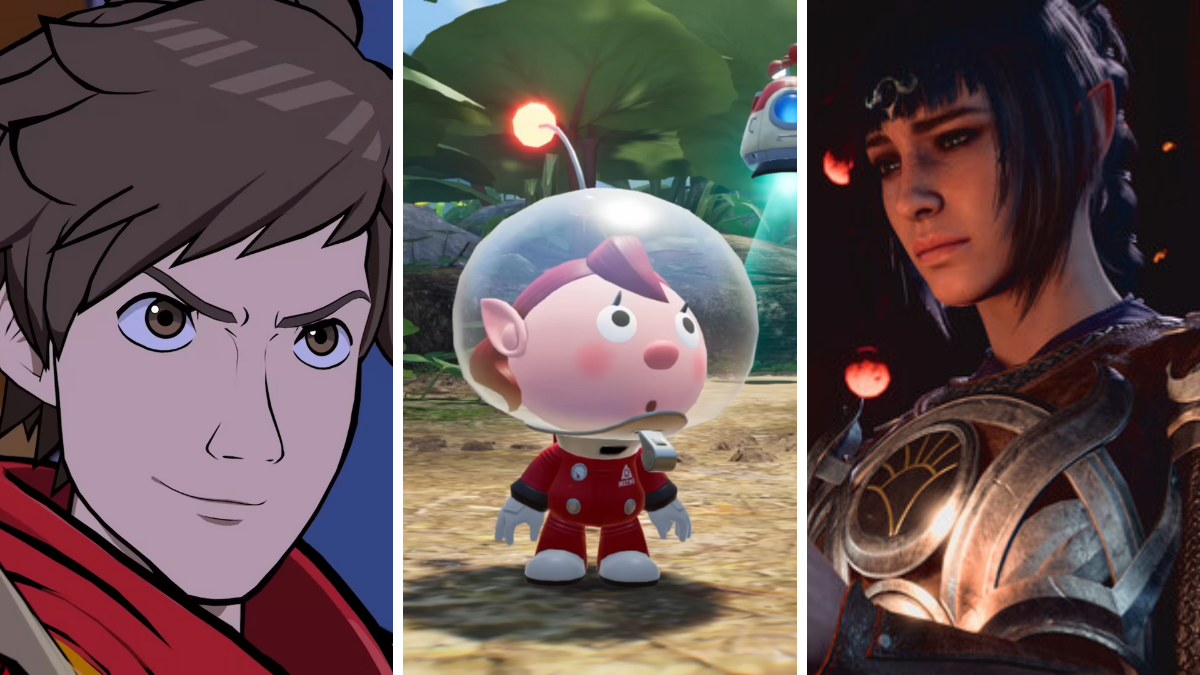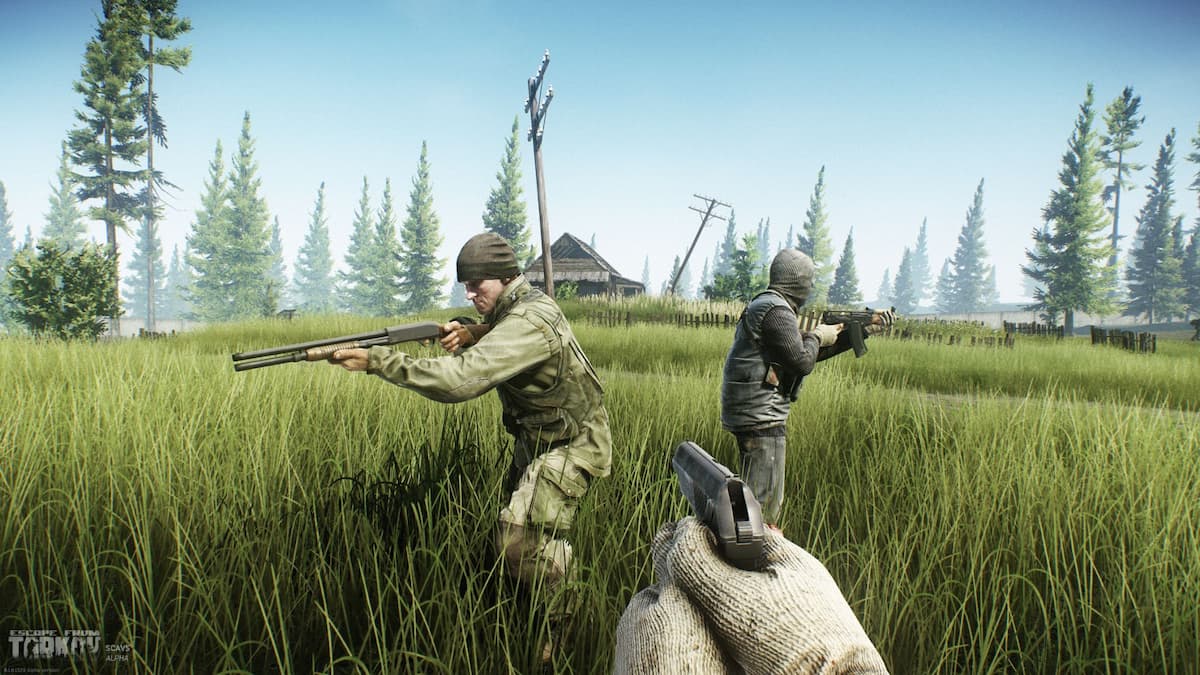It could be as simple as the stars aligning, or it could be a result of shifting release dates due to COVID-19 development hurdles, but 2023 has been a standout year for games — and there are still many months to go. From indie darlings to juggernaut franchises, there’s been something for everyone, across all different platforms and consoles. With the holiday season around the corner — which usually heralds the arrival of a new Call of Duty and Assassin’s Creed — we thought we’d take the time to highlight some of the best games we’ve played this year.
Baldur’s Gate 3
I’ve had the privilege of playing a lot of games this year, but none of them come close to Baldur’s Gate 3. There is so much to love about this game, but what’s most impressive is the sheer freedom Larian Studios built into this playable novel. It mixes the choose-your-own-adventure format with some of the most well-written — and outrageously horny — companion characters of all time. You can turn into a wheel of cheese, talk with animals, absolutely obliterate enemies with fireballs, and fornicate with a Druid-turned-bear. Combat might not be real-time, but the innovative monsters and villains keep it interesting, and the beasties rarely repeat.
If that wasn’t reason enough to love it, then the seamless multiplayer should be. The adventure is just as fun with a friend — just make sure to keep those conversations private if you spend some one-on-one time with your dream follower. — Ash Martinez
Counter-Strike 2
I remember exactly where I was when Valve announced Counter-Strike 2: in a meeting about the game’s rival, Valorant. Riot Games may be the new kid on the block in the tactical shooter department, but Valve has fired back with what just might be the biggest multiplayer title of 2023. Counter-Strike 2 is a complete rework of the game’s current iteration, Counter-Strike: Global Offensive. Slated for summer 2023, CS2 promises a complete engine overhaul via Source 2, along with better graphics, a new physics system for smokes, and plenty of redesigns for some of Counter-Strike‘s most iconic maps. Under the hood, the game is also getting a needed netcode update for far more accurate server performance, so all that client-server lag that turns one-taps into missed shots will hopefully become a thing of the past.
There are plenty of signs that Valve is paying attention to Counter-Strike‘s rival, including a new ace UI design that lets players know if they’re about to kill all five of their opponents, as well as a vastly improved buy menu that mirrors Valorant‘s pre-round gun purchase UI design. But more than anything, it’s nice to see Valve adding a fresh coat of paint on one of PC gaming’s most important multiplayer franchises. Counter-Strike 2 is already available in its limited test release, but don’t hold your breath for early access. Valve is being incredibly selective on invites, which means most players won’t get a proper shot at CS2 until the game (hopefully) launches publicly later this year. — Ana Valens
Final Fantasy XVI
High-stakes politics and subterfuge, dragons, and adult themes in a high fantasy setting: no, this isn’t Game of Thrones, because it also has Chocobos. For those fiending for a Thrones-like gaming experience after the bitterly disappointing ending of HBO’s hit fantasy series, look no further than Final Fantasy XVI, the latest numbered entry in the long-running RPG franchise that was finally bold enough to grow up with its audience.
Besides its gorgeous visuals, enthralling narrative, and supremely satisfying combat system (coming from the mind of veteran Devil May Cry combat director Ryota Suzuki), arguably one of the best parts of Final Fantasy XVI is just how accessible it is. Its predecessor, Final Fantasy XV, loudly and proudly advertised itself as “a Final Fantasy for fans and first-timers,” but Creative Business Unit III’s decision to include “cheat rings” right from the outset means that the game can be enjoyed by both action RPG veterans and newbies alike.
While those who grew to love Final Fantasy for its turn-based combat in its earlier entries may be disappointed with the new direction the series has taken (you’ve always got Octopath Traveler and Bravely Default for that), the franchise’s storytelling remains as strong as ever, reaching heights expected of the team behind the MMORPG Final Fantasy XIV. Not to mention it blows more lackluster narratives in the series out of the water. Go in with an open mind and enjoy Clive’s revenge-fueled journey through Valisthea — chances are you’ll end up hooked. — Peter Kohnke
Gravity Circuit
I don’t consider myself the biggest fan of Mega Man, though I did love Mega Man 11, which came out a whopping five years ago, pre-COVID. Sadly, in the time that’s passed, Capcom seems to have relegated the Blue Bomber to the back shelf in favor of newer, service-ier offerings like Monster Hunter. Not to imply I don’t love Capcom’s output, but I have been itching for the kind of crunchy, skill-based platforming those games bring to the table. Luckily, Gravity Circuit is not only the best spiritual successor to Mega Man I’ve played — it’s my current pick for Indie Game of the Year.
Gravity Circuit is like if you took away Mega Man’s guns and gave him a grappling hook and a mastery of mixed martial arts. Protagonist Kai fights with his fists to defeat a plethora of robot bosses with excellently-themed levels with their own flavors, enemies, and palettes. The endless variety of input-based special moves and upgrade chips make repeat playthroughs a delight, and the hefty melee-centric combat melds with an excellent soundtrack to really get the blood pumping.
Sometimes, it’s enough to do your own thing really, really well rather than innovate on a genre (as a fan of boomer shooters, I should know). And that’s just what Gravity Circuit does — it’s a rock-solid homage to the best-of-the-best SNES platformers with its own modern flavor, and it deserves to be recognized for more than its influences. — David Morgan
Hi-Fi Rush
Inevitably, I fear that Hi-Fi Rush will suffer from “2023 Gaming Glut Syndrome” where any smaller game that releases this year will be crushed by the likes of Tears of the Kingdom, Resident Evil 4 Remake, Final Fantasy XVI, Spider-Man 2 — the list of well-funded and highly-reviewed “AAA” games we’ve already been graced with is staggering. But for my money, Hi-Fi Rush kicked 2023 off to a rockin’ start. When it was released out of nowhere in January, everyone lost their minds. “The developers responsible for The Evil Within made an action-rhythm game?! What?!” And, as an added cherry on top, it was genuinely one of the most memorable experiences I’ve had with a game in recent memory.
The visuals? Full of marvelous, vibrant colors bolstered by a rhythmic, lively world moving in harmony with the adrenaline-fueled soundtrack. The gameplay? An action-oriented smorgasbord that combines Bayonetta and Jet Set Radio, and even has a few strands of Nioh‘s DNA with a rewarding block/parry system that puts a bow on such a satisfying package. Boss fights are special with each subsequent clash with a main baddie boasting unique methods leading to their defeat. Even Chai, our quippy, snarky protagonist, has such a spirited dynamic with every character he encounters — friend and foe alike.
Every gaming outlet on the planet seemed to bust out the “Saturday morning cartoon” analogy when describing this title, but it’s hard to argue that point considering the sheer childlike joy I felt through every stylish second. There may be too much high-end Game of the Year real estate for Hi-Fi Rush to be considered, but despite that, I refuse to let this gem go unsung. It’s the definitive response whenever I see the “Xbox got no games!” refrain some gamers love clutching on for dear life. — Dwayne Jenkins
Hogwarts Legacy
If video games are a window to another world, a place where you can realize all of your fantasies, then Hogwarts Legacy stands as a shining example of the medium and what it can accomplish. Developer Avalanche started working on this game with a single goal in mind: to bring your wildest make-believe Wizarding World dreams to life. And though the game’s reputation was somewhat marred by the brand’s mere association with J.K. Rowling, Hogwarts Legacy still managed to become a very successful launch for the studio, selling a staggering 15 million copies in three months and pushing past $1 billion in revenue.
But you could tack Harry Potter onto just about anything, and it’ll probably sell. The amazing thing about Hogwarts Legacy is that it’s actually a fun game to play, and not just some cash-grab attempt to keep the franchise alive in the interactive medium. The combat is innovative and challenging, demanding you to stay on your feet, while the story decently weaves together RPG elements to make your decisions impactful. The open-world environment, with its meticulous attention to detail, almost makes you feel as if you’re actually attending Hogwarts. And need I even tell you how enjoyable it is to get on your broomstick and traverse the world as a proper wizard would?
Cross-medium adaptations almost never work — and indeed, Harry Potter’s own licensed games have illustrated that to some extent over the past decade — so Avalanche’s achievement with this title should also hold enlightening game design tips for developers who hazard a similar venture. Hogwarts Legacy might not attempt to do anything particularly grand or revolutionary, but when all is said and done, it can be a very refreshing experience for Potterheads or other Wizarding World fanatics of different degrees out there. — Jonathan Wright
The Legend of Zelda: Tears of the Kingdom
I’m still annoyed that Tears of the Kingdom had the audacity to roll credits on me. Back in May, I lived in Hyrule, burning days of my life away while poking through every obscure corner, deciphering cryptic hints, and gluing weird robot stuff together to see what’d happen. But I suppose all good things must come to an end and, once again, it was time to actually save the Princess rather than fannying about underground on my custom-built wonky (but functional!) hover-cycle.
With that incredible ending behind me, it was on to other games, at which point it became clear that Tears of the Kingdom was — like Elden Ring before it — a game that leaves everything else looking a bit crap by comparison. I tried getting back into my half-completed playthrough of Assassin’s Creed: Valhalla; I really did. But where Tears of the Kingdom’s physics and environment feel like a cohesive whole, other titles feel like a film set — it looks good, but peel away some paint and you’ll find plywood.
That Tears of the Kingdom runs at all on the Switch is game design voodoo. That it runs so well while burbling away on complex physics calculations that effortlessly handles whatever Rube Goldberg monstrosity of fans, flame-throwers, and laser beams you can toss at it is miraculous. Nintendo can be an insular, greedy, and frustrating corporation but, let’s face it, there’s nobody else putting out games like Tears of the Kingdom. It’s an all-timer if there ever was one. — David James
Pikmin 4
From the outside looking in, it certainly seems like Nintendo has not prioritized the Pikmin franchise as a whole. Over the span of 22 years, we’ve been graced with only four mainline entries, with a majority of releases being mobile/handheld spin-offs, or ports of older versions (for those keeping count, the first two games have been ported to both the Wii and the Switch).
It’s tough to say what the big N has in store for the franchise, but if Pikmin 4 is anything to go by, the future is looking brighter than ever. Putting my developer hat on for a second, it’s clear that the team has playtested this one to hell and back; there are so many small quality-of-life features packed in, as well as a bevy of tools to make exploration and combat more streamlined and user-friendly. But, perhaps more impressively, Pikmin 4 rarely veers into overbearing territory; sure, there are tutorials and “intro levels,” but the game lets you lean into different playstyles without forcing you down a specific path. — Shaan Joshi
Resident Evil 4 (Remake)
When I tell you this is one of the greatest games I’ve ever played, I’m not exaggerating. It towers above the majority of its fellow remakes with its careful combination of the new with the old and nails its delivery each and every time. All the vital elements of the original Resident Evil 4 remain, nestled in among a slew of updates that make the game more challenging, scarier, and generally a more well-rounded experience.
After reviewing this game for We Got This Covered, I promptly turned around and restarted the whole experience, just so I could appease the completionist in me and enjoy those early game moments without the stress of a deadline tainting my experience. Every element of this game is sheer, undeniable fun — from tearing through zombified hordes to puzzle solving and exploration — and its intensity is at a constant high. It’s a sheer delight, from start to finish, and should populate every gamer’s list of must-play 2023 releases. — Nahila Bonfiglio
Street Fighter 6
Capcom has been on a hot streak of success for at least the last half-decade, no doubt relishing its return to the top as an industry leader off the back of a shaky last decade of releases. Painfully, in an era where the fighting game scene had largely been reduced to an indie subgenre in terms of scale and appeal (this was pre-Smash Bros. Ultimate and Dragon Ball FighterZ, remember), Street Fighter V represented the bookend to the veteran Japanese studio’s dark years, which only served to dim the genre’s flame even further.
It’s not worth wasting more words on retelling the extended list of Street Fighter V’s issues, but suffice it to say, that it won’t get the same sense of appreciation in retrospect that its darling predecessor, Third Strike, ultimately would. It was with euphoric joy, then, that Nu-Capcom opted to brand Street Fighter 6 as an unofficial sequel to the series’ experimental (at the time) threequel, released way back in 1999.
By returning to the franchise’s namesake roots, SF6, besides boasting some of the tightest and most technically accomplished mechanics to date (and coupled with a gorgeous art style achieved with Capcom’s powerhouse RE Engine), has delivered not just the most complete suite of expressive gameplay the series has ever seen, but managed what fighting games have always struggled to reach — entice casual gamers to dip their toes in the world of no-holds-barred 1v1 competition.
Street Fighter 6 truly feels like a celebration of Capcom’s flagship series. Made by fans, for fans. — Joe Pring






